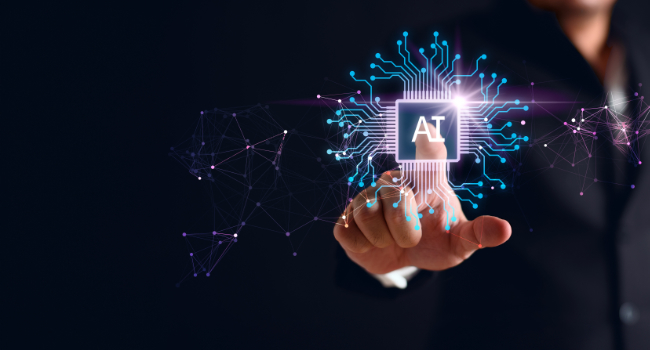
7 Reasons Why Governments Need to Regulate AI
- By Steve Durbin
- Dec 10, 2024
Recently, Elon Musk unveiled two remarkable AI applications. A humanoid robot named Optimus, with its remarkable human-like speech and movements, and a fully autonomous car, absent steering wheel and pedals, called Cybercab. While these examples represent a broad trend of AI integration across industries, they highlight technology’s transformative potential, prompting a need for regulation to ensure it is used responsibly, securely and ethically.
Seven Reasons Why AI Should Be Regulated
Technology has always been a double-edged sword; it can be wielded for both good and bad. On the one hand, it can enhance productivity, on the other, its misuse or abuse can lead to untold harmful consequences. Let’s explore top concerns and risks with AI technology:
1. Safety: The NIST reported how adversaries can deliberately confuse or poison AI’s input to achieve a malicious output. For example, bad actors can deploy deceptive markings on roadways to cause autonomous vehicles to veer into oncoming traffic.
2. Cybersecurity: What if a hacker discovers a zero-day vulnerability and hacks into infrastructure that is hosting an AI model? What if actors use adversarial prompting techniques to override ethical and security protocols? Threat actors are already employing deepfakes and impersonated voices in advanced social engineering attacks.
3. Biases, Discriminations, Malfunctions: AI systems are prone to numerous biases and malfunctions. For example, a driverless car engineered to navigate the streets of Mountain View, California can adapt well to its regional driving customs. But if the same car is introduced to a different city or country, it might behave unexpectedly. Recall the Waymo incident where vehicles in a car park began honking at night?
4. Transparency and Explainability: Although AI algorithms are designed by humans, its outputs are a black box. Forget the users, even AI creators cannot explain how and why AI models behave in a certain way. As these systems grow in complexity and scale, their decision-making systems will become increasingly opaque.
5. Privacy, Data Protection, Copyright: When users share information with AI systems, storage location and usage become ambiguous, raising privacy and consent issues. Data anonymization in AI systems can result in data exposure or leakage, as seen in the case of Samsung. Driverless car companies collect and consume vast amounts of data on travel patterns, which can lead to surveillance of individuals. AI also raises copyright concerns regarding ownership of content generated by these Large Language Models.
6. Environment and Sustainability: AI produces a large carbon footprint. It is said that creating one image consumes as much energy as charging a mobile phone. Data centers require water for cooling and AI increases the load. About 20 to 50 queries on ChatGPT consumes about half a liter or 17 ounces of fresh water.
7. Antitrust Concerns: Organizations with superior AI capabilities can potentially lead to market dominance. Such advantages will establish substantial barriers to entry for smaller companies and startups, diminishing market competition.
AI Development Accelerates Faster than Regulations Can Keep Up
When cars were first introduced the designers paid no heed to safety measures, lacking seat belts, driving rules and license. After numerous injuries and fatalities, governments stepped in to set rules and responsibilities. AI is at a similar stage. Governments are trying to figure out where to begin. There’s also this element of delay, of waiting and watching to see what other countries are doing. The European Union (i.e., EU AI Act) and a few states (California, Colorado, Illinois) have taken a lead by passing specific laws or close to implementing some. However, the pace and scope of these efforts vary across regions, leading to concerns around consistency, effectiveness, and the potential for stifling innovation.
Onus Is On Governments For Responsible AI Development
AI is still in a fairly nascent stage if one considers its potential. Contrary to doomsday media reports, AI is enhancing rather than revolutionizing the cybersecurity threat landscape. Certainly, AI has engendered superior phishing campaigns and deepfake scams difficult to discern without AI intervention and content filters. According to Gartner research, the AI phenomenon may have already reached its “peak of inflated expectations”.
AI technology is evolving rapidly and in two- or three-years’ time the threat landscape will look vastly different. This is why the onus is on governments for oversight, for ensuring its responsible use and development. Some actions that can help:
- Develop clear and comprehensive rules and legislation around AI transparency, traceability, accountability, safety, and contestability.
- Mandate periodic scrutiny of AI systems – check for biases, discrimination, malfunctions and errors.
- Improve governance on data protection and privacy: How AI stores, collects, processes and uses personal and corporate data.
- Enable individuals and businesses to seek recourse and contest a decision if they believe they have been treated unfairly or if some violation has occurred.
- Foster creation of an AI task force comprising industry associations, institutions, academia, and nonprofits to collect diverse perspectives and build community interest.
- Create public awareness around AI implications and encourage citizens to participate and provide feedback.
- Establish certification bodies that endorse AI models based on their quality, safety and transparency.
- Partner with other countries to create global standards and agreements.
Artificial intelligence promises a future with beneficial applications, but it is incumbent on governments to establish guidelines that allow organizations to harness these opportunities. This does not imply that excessive legislation should be introduced to burden companies with compliance. Regulations should be pragmatic and adaptable to accommodate changes in technology over time.